- Home
- Tom Clancy
Into the Storm: On the Ground in Iraq sic-1 Page 28
Into the Storm: On the Ground in Iraq sic-1 Read online
Page 28
He concluded, passionately, "Let me leave you with one thought, guys. In order for this to succeed — because the enemy is still going to outnumber us" — and because they had built what appeared to be a tough, extensive, potentially deadly barrier system along the border—"it is going to take… killer instinct on the part of all of our leaders out there… We need commanders in the lead who absolutely, clearly understand that they will get through" the barrier system. "And that once they are through, will move. We will attack, attack. I will look for commanders who can attack. We cannot afford failure. We will not fail."
And that was it. It was a masterful presentation in content, in format, and in motivational language. No one there could possibly have a question about what he was supposed to do.
Many outside the Army erroneously imagine that when a commander like Fred Franks receives a plan — such as the one General Schwarzkopf outlined — all he has to do, more or less, is follow the numbers. People tend to think the whole thing is completely worked out, like a recipe in a cook-book, and all that's left for the subordinate commander is to say, "Yes, sir," and go execute it.
Not true.
General Schwarzkopf 's campaign outline was indeed an excellent operations concept, but it did not provide — nor did it ever intend to provide — Fred Franks or Gary Luck or any of the other commanders more than a very general design for what they were supposed to do. The tactical details had to be worked out later. The outline defined the missions of each corps and its general scheme of maneuver; it gave each corps the sector it was to operate in (the corridors that Schwarzkopf talked about); and it laid out the phases of the campaign. But it was not at all specific in terms of the tactical operation.
So, in effect, the CINC was saying, "OK, VII Corps, your mission is to destroy the Republican Guards. And, XVIII Corps, your mission is to go up and interdict Highway 8. But how you do that, that's up to you." He even made a point of that during the briefing.
Consequently, as Franks was internalizing and processing the plan that morning, a host of questions was racing through his head: How extensive is the Iraqi barrier system in my sector? Will it go all the way across it? Will I have to breach the barrier before I can get my forces through? Or can I go around it, farther to the west? And how is the terrain out there? Can my heavy stuff pass over it? What options are available to the RGFC? What are my schemes of maneuver? How do I mass my corps for the RGFC destruction? How do I structure and orchestrate my corps for that attack? What are the battles and engagements I need to fight, sequentially and simultaneously, to get to and destroy the RGFC?
The CINC had nothing to say about that. That was Fred Franks's responsibility.
Some of them gave the obligatory expression of confidence and enthusiasm for the plan, but it was still little more than a concept or a notion. Fred Franks was already working the idea and analyzing the mission — keeping his own counsel until he had processed the task before him intellectually.
When the briefing was over, the CINC doubtless expected an outpouring of enthusiasm from his commanders, and he got it from some of them. But not from Fred Franks, which, for Franks, was certainly a mistake. For General Schwarzkopf, Franks's absence of outward display was interpreted as a lukewarm attitude toward the plan.
In fact, Franks was profoundly enthusiastic about the CINC's concept, and he was absolutely certain that when it came to a fight, his troops would win. Unfortunately, an excited outburst was the farthest thing from his mind just then. Instead, he was rapidly forming maneuver schemes in his head (hoping to give his commanders an early heads-up); he was thinking about Iraqi forces in front of the corps and about what the Republican Guards might do (since the VII Corps mission was force oriented); and he was thinking about force placement on the ground.
After General Schwarzkopf finished speaking, he invited the others up front to look more closely at the maps and the intelligence photos of the minefields and barrier systems, and the like. While Franks was up there, examining them, the CINC approached him and asked, "Hey, Fred, what do you think?"
And Franks answered, in a calm, confident, forceful, but professional voice, "We can do this. We'll make it happen."
For the CINC, that wasn't enough. It turned out to be a burr beneath Schwarzkopf 's skin.
Later, in General Schwarzkopf 's autobiography, It Doesn't Take a Hero, the general states that Franks was the one leader at the briefing who was not happy with the plan. In his words: "The only dissonant note was from Fred-die Franks: 'The plan looks good, but I don't have enough force to accomplish my mission.' He argued that I should give him the 1st Cavalry Division, which I was holding in reserve. I said I would consider it when the time came."
This conversation did not take place on 14 November — though later, in a December briefing, Franks stated that as a planning assumption he presumed that the 1st CAV would be released to VII Corps, if they weren't required to save some situation elsewhere (also a Third Army assumption and a normal planning assumption, since VII Corps was the main attack).
The dissonance between Generals Schwarzkopf and Franks was to grow, with consequences that were unfortunate.
Meanwhile, though Franks was certain that General Schwarzkopf's concept of attack was in fact the right one, with the right maneuver scheme, to achieve his goal of destroying the Republican Guard, nevertheless, he had a few questions about some of the tactical details that the CINC had left to be developed later. Franks actually thought he could help resolve these and be a team player. Since it would have been inappropriate and unprofessional to voice these concerns that day, he didn't, but later, at a more appropriate time, he went directly to John Yeosock and Steve Arnold, and even talked to the "Jedi Knights."
In his view, the CINC's campaign operational concept had three areas for further tactical discussion.
First: In the plan's original incarnation, XVIII Corps's attack corridor was many kilometers to the west of the VII Corps sector, which might limit the availability of XVIII Corps's combat power. Though XVIII Corps did not have the heavy combat power of VII Corps, it still had plenty. Yes, XVIII Corps should certainly push on up to Highway 8 and close that lane of escape for the Republican Guards, but if it was that far to the west, could it then move east fast enough to join its combat power to VII Corps's in a coordinated corps attack — if that was called for? If VII Corps attacked north-northeast, it would "pinch out" XVIII Corps. If XVIII Corps was just to sit on Highway 8 while the main battle was raging a couple of hundred kilometers east of them, all their combat power would be unavailable. (Later, the plan was altered, and the two corps were brought closer together.)
Second: The concept made assumptions about the isolation of the RGFC. It assumed that if the RGFC attempted to escape the theater, then the Euphrates bridges would be destroyed by air, which would make the Euphrates an anvil against which the Third Army hammer could pound the Guards. That detail remained to be planned and then executed.
Finally: There was no discussion of a final air-ground theater maneuver to complete the action and achieve the strategic objectives. There needed to be discussion of the endgame — the tactical finish that would best realize the Coalition's aims. The idea was to come up with some vision of the final disposition of all relevant forces — both air and ground — that would make the most long-term strategic sense. Those discussions would follow.
For Fred Franks and his commanders and staff, however, the leaders' recon turned out to be a terrific three days. Gary Luck and XVIII Corps had given them lessons learned and welcomed them to the team. The few small discords (not in fact then apparent to him) in no way diminished that. It was an intense, packed, and immensely productive time. They had a clear mission, clear goals, and enough work to fill forty-eight-hour days for the next several months. They had to bring the newly retailored VII Corps to the Gulf and prepare the corps to fight our nation's toughest opponents since the Viet Cong and NVA.
When Franks flew back to Stuttgart, the little C-21 w
as so stuffed with papers and maps in the aisles and beneath the seats, there was scarcely room for passengers.
CHAPTER EIGHT
Preparing for War
The first unit from the 2nd ACR began loading trains for German ports on 19 November 1990. The first troops from the 2nd Squadron, 2nd ACR, and support elements arrived in the Gulf on 5 and 6 December. This was a small wave foretelling the vast flood that was soon to follow.
Over the next two and a half months, VII Corps would be stretched and pulled in a hundred different directions. A commander's job is to focus his energies on the main objective while making sure that all the myriad activities that contribute to that objective's success are not ignored. For VII Corps, the main objective was to go to Saudi Arabia and, if needed, to attack and destroy the Republican Guards, and in order to achieve that objective, Franks fixed responsibility for the corps into four separate, but linked, areas. They would have to (1) deploy the corps while caring for families at home, (2) assemble the corps in Tactical Assembly Areas, (3) prepare for war, and (4) conduct combat operations.
Franks knew that he could not afford to take his eyes off any one of these activities, but his greatest focus had to be on the actual combat operations. In the other areas, he could accept some imperfection, and he trusted the commanders and noncommissioned officers to get the job done, but in preparing and conducting combat operations, the tolerance for failure to meet expectations had to be extremely low. Here was where he had to place his main personal effort, intervening in the other areas only when they needed him or when, in his own judgment, he needed to step in to break a logjam.
He threw himself into a series of meetings, war games, visits, and constant chattering over phones and tactical radios to get the job done on the combat side. In the meantime, to ensure family support, he established VII Corps Base in Germany. To handle the continued deployment of the corps after the corps headquarters had moved to Saudi Arabia, he left his deputy commander, Brigadier General Gene Daniel, and a headquarters element in Stuttgart to work with USAREUR and EUCOM. And to get the 152 ships and 927 aircraft of VII Corps debarked and then moved the 500 kilometers to the Tactical Assembly Areas in Saudi Arabia, he formed a special command called the Port Support Authority, or PSA, and to command it, picked his friend and 1959 West Point classmate, Brigadier General Bill Mullen, and his commanders and leaders from the 1st Infantry Division Forward.
It was time to begin.
GETTING MOVING
As a matter of priority in VII Corps, Franks had always stressed attention to fundamentals, agility, teamwork, and discipline. Though he would take those same priorities to the desert, there was now a new lineup of units and a new mission in a new set of conditions. The priorities would have to be adapted to these new conditions.
In mid-November, this is what he found when he looked at training specifics:
Third Armored Division had just completed their extensive semi-annual gunnery and maneuver training at Grafenwohr and Hohenfels, and they were currently engaged in a BCTP seminar, so the deployment order had come at a training peak for them. Good news. This was not the case with the 2nd ACR and the 1st Armored Division, however. They had not fired their major direct-fire tank and Bradley weapons systems in some time, and after they began deployment — which was very soon — their equipment would not even be available for training. Franks quickly reached out to the 3rd Infantry Division, which was already at Grafenwohr, but would not be deploying to the desert. In an act of great teamwork that proved to be of enormous training benefit to the corps, the soldiers and leaders of the 3rd Infantry Division formed a cadre and provided their own equipment so that 2nd ACR and 1st Armored Division soldiers could go through an intense period of training. Franks visited the 3rd ID often and never heard a grumble.
Initially, then, things seemed to be in good shape.
Yet after his return from the leaders' recon to Saudi Arabia, Franks began to notice that leaders at all levels were increasingly distracted by the myriad details of deployment. This was completely understandable, he felt, since deployment from a no-notice cold start was certainly not going to go with much precision. There was a lot of "friction." Some things just did not get done unless the commander got personally involved.
But some imperfection could be absorbed, because deployment was not the main effort. Training was. So in order to "get our heads out of CONEX[10] containers," as he put it, and into war-fighting thinking and training, he decided to convene a war council. They met at Schweinfurt, on 29 November, with 3rd Infantry Division[11] the host, and all the commanders present.
Franks did not want too many commanders' meetings, but it was useful to get them together from time to time, especially since some of them were new. His two consistent objectives at all of these meetings were to focus the commanders on what was important — for now, training, and later, operations — and to establish teamwork. He had a different group now and it was his job to unite them as one team. In a setting such as this, they could talk training and war fighting with one another, see how the rest thought, and Franks could both size them up and further encourage camaraderie.
The agenda that day was simple: the G-2 briefed them on the Iraqi order of battle and the latest from southwest Asia, then 1st Armored Division talked the commanders through a minefield-breaching operation; next everyone discussed how to assemble the corps — to deploy to Saudi Arabia and get everyone back together again in units — and the meeting closed with more "flat-ass rules" and training.
Some of the FARs were as follows: Because the corps must always fight in depth, they would discuss deep operations at every meeting. (As battle progressed, the tendency was to put one's attention on the battle in close contact and forget about depth — a situation Franks intended to avoid.) Next: though Franks would issue mission orders to encourage and indeed demand initiative, no one was a free agent. He stressed again the role of agility in the corps and the importance of commanders' intent. The intent must be understood two echelons in either direction, he told them. In other words, a battalion commander must know what the division commander intends and a brigade commander must know what a corps commander intends. He stressed that massed artillery fire was at least two or more battalions on the same target (reinforcing Franks's own belief in gaining a decisive edge over the enemy). And finally: "Get desert-smart and desert-tough," he said, "but don't overextend people and machines."
That meeting would set the command focus for VII Corps's training for their combat mission two and a half months later.
FROM A DISTANCE
There is an old saying that the toughest job in the military is to be a military spouse. VII Corps was about to prove that in spades.
Military families are accustomed to separations, but usually for predictable lengths of time, and there was nothing predictable about what was about to happen. Nor could they use Vietnam as a guideline. With Vietnam, soldiers had gone off to war for a certain amount of time, with certain hardships and casualties, but for the most part, after early unit deployments they had gone off individually, not as a unit, and here it was all different.
Now whole units were going, and family members knew one another, and knew other service members. They were a unit family, and so the impact of the departure — of friends and neighbors gone, of bustling kasernes suddenly emptied of soldiers — was profound and shocking.
Over the long years of the Cold War, military communities had sprung up in Germany, groupings of units and family members essentially into U.S. "towns," normally centered on garrison locations called kasernes, after the German word for barracks. In fact, they were mostly old German army locations, built prior to World War II, some dating as far back as World War I. Within these troop locations, which also included barracks for unmarried soldiers and motor parks for equipment, the U.S. Army had built family quarters (three-story, three-stairwell apartments and some individual dwellings), schools, shopping areas for PXs and commissaries, health clinics, athletic fac
ilities, and other normal community facilities. In VII Corps alone, there were thirteen of these towns, which housed close to 100,000 U.S. VII Corps and other USAREUR soldiers and close to 200,000 family members altogether.
Meanwhile, over the years, more and more Army service members had become married—60 to 75 percent by 1990—and because it had not been feasible for the Army to build more housing for them, many of them — up to half the families in some locations — lived in local German communities in housing leased from the Germans, some individually, others as blocks of units by the U.S. Army. Needless to say, such arrangements complicated living for those families, and at times, transportation, schools, medical care, and normal socialization with other American families proved difficult.
Such was the general situation when the announcement on 8 November hit VII Corps families with a thunderclap. The good news was that the announcement had named specific units and had gone out over the Armed Forces Network television station, so all the people connected with those units knew immediately. But not all the units had been named, so it was not until twenty-four to forty-eight hours later that everyone knew. And then the question was, what would the families do while the soldiers were off at war?
Family support during periods of separations, and even during normal garrison operations, was not new to the Army. There had been support groups throughout the Army's history to assist families with the many challenges of living in faraway places — in the West after the Civil War, for instance. Such groups normally centered around units, and involved an informal grouping of spouses and a link to the unit's official chain of command. In the early 1980s, the Army even began a program called "command team seminars" to assist spouses, centering on a weeklong class at Fort Leavenworth while the military command spouse went to his or her pre-command course.

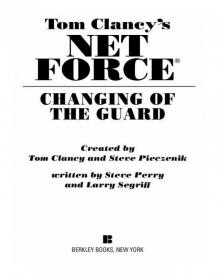 Changing of the Guard
Changing of the Guard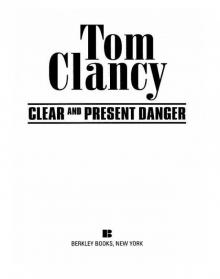 Clear and Present Danger
Clear and Present Danger Hounds of Rome
Hounds of Rome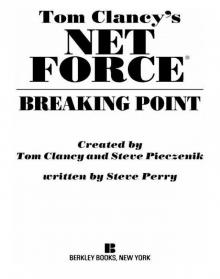 Breaking Point
Breaking Point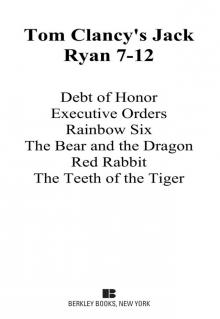 Tom Clancy's Jack Ryan Books 7-12
Tom Clancy's Jack Ryan Books 7-12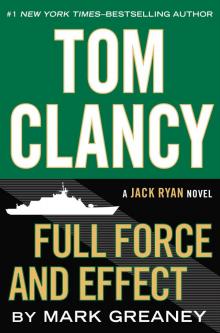 Full Force and Effect
Full Force and Effect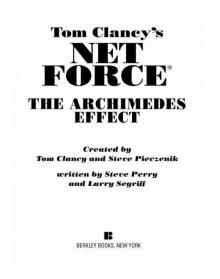 The Archimedes Effect
The Archimedes Effect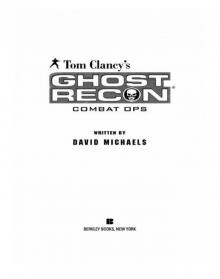 Combat Ops
Combat Ops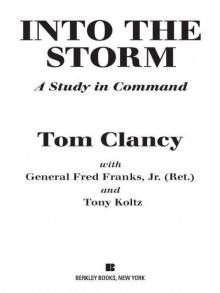 Into the Storm: On the Ground in Iraq
Into the Storm: On the Ground in Iraq Under Fire
Under Fire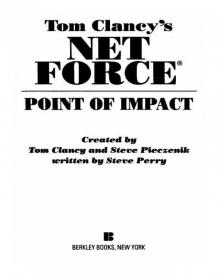 Point of Impact
Point of Impact Red Rabbit
Red Rabbit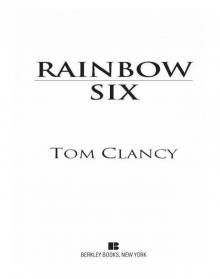 Rainbow Six
Rainbow Six The Hunt for Red October
The Hunt for Red October The Teeth of the Tiger
The Teeth of the Tiger Conviction (2009)
Conviction (2009)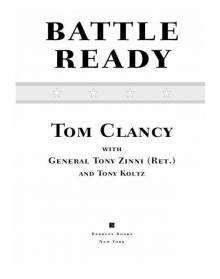 Battle Ready
Battle Ready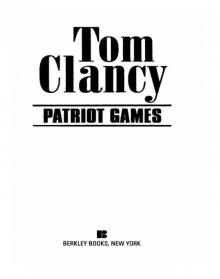 Patriot Games
Patriot Games The Sum of All Fears
The Sum of All Fears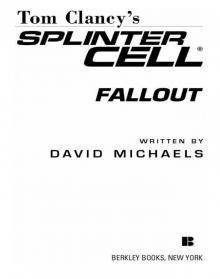 Fallout (2007)
Fallout (2007) Red Storm Rising
Red Storm Rising The Cardinal of the Kremlin
The Cardinal of the Kremlin Executive Orders
Executive Orders Lincoln, the unknown
Lincoln, the unknown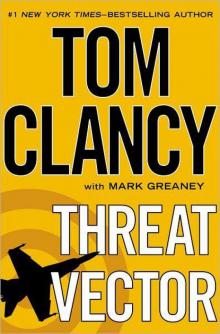 Threat Vector
Threat Vector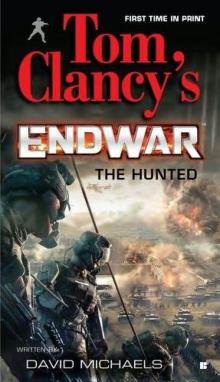 The Hunted
The Hunted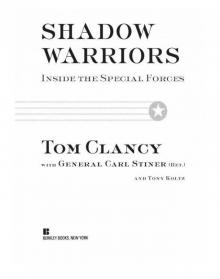 Shadow Warriors: Inside the Special Forces
Shadow Warriors: Inside the Special Forces End Game
End Game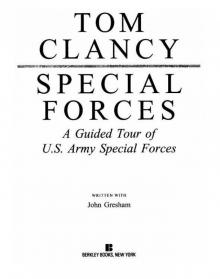 Special Forces: A Guided Tour of U.S. Army Special Forces
Special Forces: A Guided Tour of U.S. Army Special Forces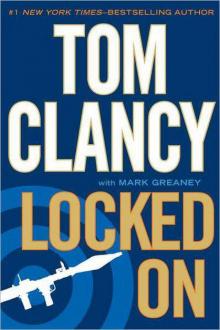 Locked On
Locked On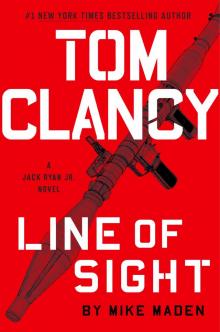 Line of Sight
Line of Sight Tom Clancy Enemy Contact - Mike Maden
Tom Clancy Enemy Contact - Mike Maden Fighter Wing: A Guided Tour of an Air Force Combat Wing
Fighter Wing: A Guided Tour of an Air Force Combat Wing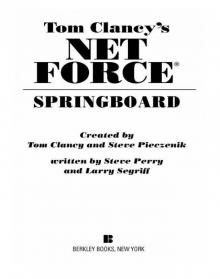 Springboard
Springboard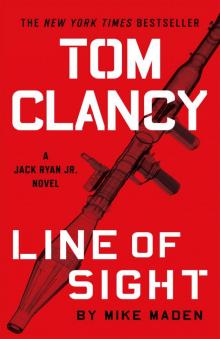 Line of Sight - Mike Maden
Line of Sight - Mike Maden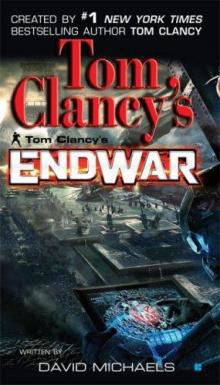 EndWar
EndWar Dead or Alive
Dead or Alive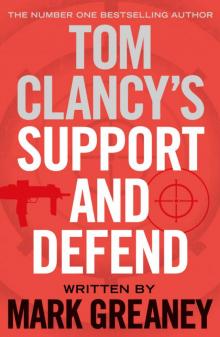 Tom Clancy Support and Defend
Tom Clancy Support and Defend Checkmate
Checkmate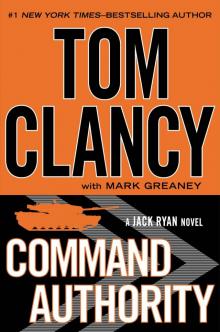 Command Authority
Command Authority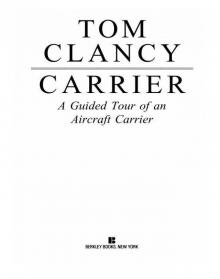 Carrier: A Guided Tour of an Aircraft Carrier
Carrier: A Guided Tour of an Aircraft Carrier Blacklist Aftermath
Blacklist Aftermath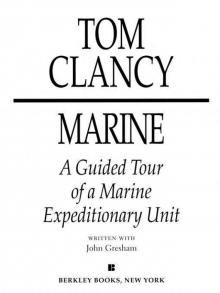 Marine: A Guided Tour of a Marine Expeditionary Unit
Marine: A Guided Tour of a Marine Expeditionary Unit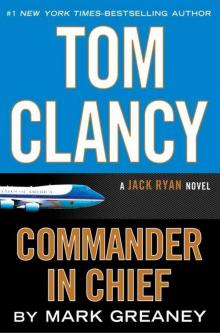 Commander-In-Chief
Commander-In-Chief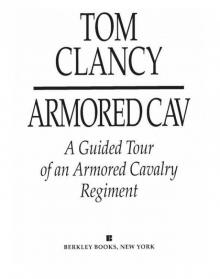 Armored Cav: A Guided Tour of an Armored Cavalry Regiment
Armored Cav: A Guided Tour of an Armored Cavalry Regiment Tom Clancy's Jack Ryan Books 1-6
Tom Clancy's Jack Ryan Books 1-6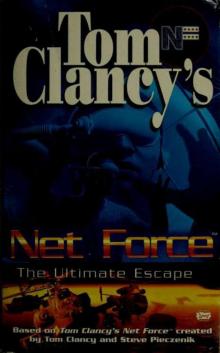 The Ultimate Escape
The Ultimate Escape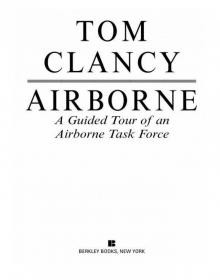 Airborne: A Guided Tour of an Airborne Task Force
Airborne: A Guided Tour of an Airborne Task Force Debt of Honor
Debt of Honor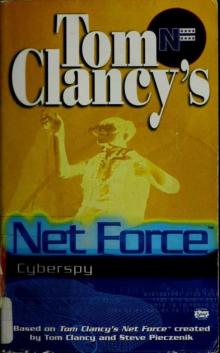 Cyberspy
Cyberspy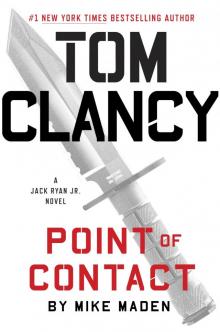 Point of Contact
Point of Contact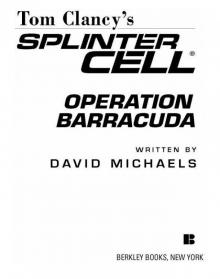 Operation Barracuda (2005)
Operation Barracuda (2005)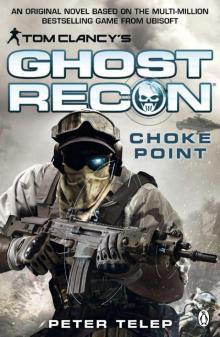 Choke Point
Choke Point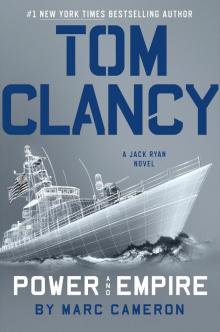 Power and Empire
Power and Empire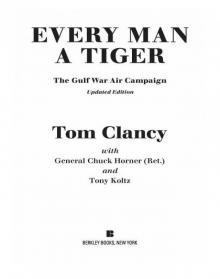 Every Man a Tiger: The Gulf War Air Campaign
Every Man a Tiger: The Gulf War Air Campaign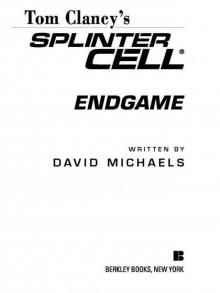 Endgame (1998)
Endgame (1998)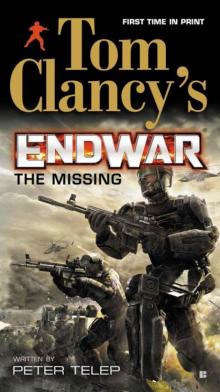 EndWar: The Missing
EndWar: The Missing Splinter Cell (2004)
Splinter Cell (2004) The Great Race
The Great Race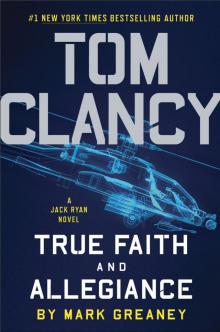 True Faith and Allegiance
True Faith and Allegiance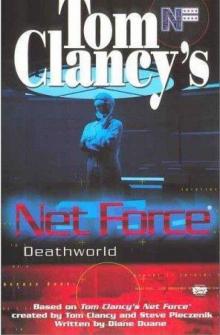 Deathworld
Deathworld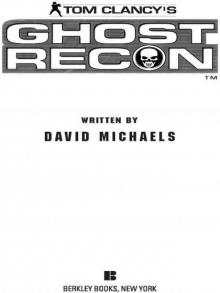 Ghost Recon (2008)
Ghost Recon (2008)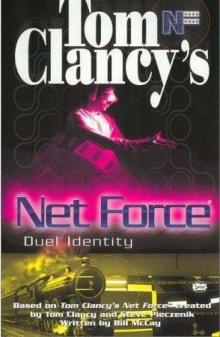 Duel Identity
Duel Identity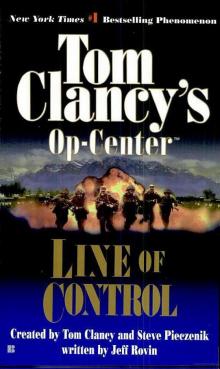 Line of Control o-8
Line of Control o-8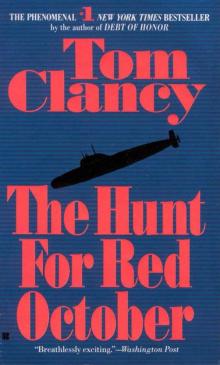 The Hunt for Red October jr-3
The Hunt for Red October jr-3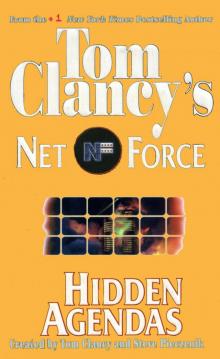 Hidden Agendas nf-2
Hidden Agendas nf-2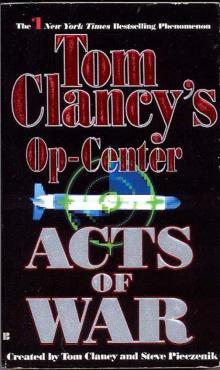 Acts of War oc-4
Acts of War oc-4 Ruthless.Com pp-2
Ruthless.Com pp-2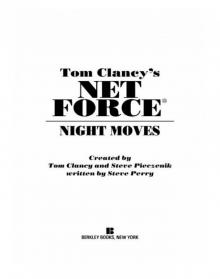 Night Moves
Night Moves The Hounds of Rome - Mystery of a Fugitive Priest
The Hounds of Rome - Mystery of a Fugitive Priest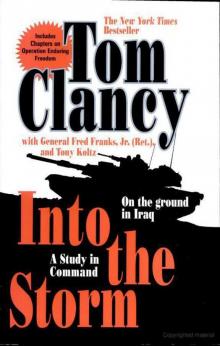 Into the Storm: On the Ground in Iraq sic-1
Into the Storm: On the Ground in Iraq sic-1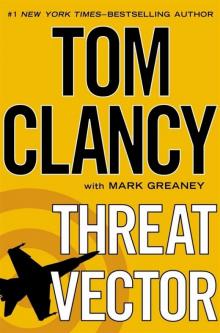 Threat Vector jrj-4
Threat Vector jrj-4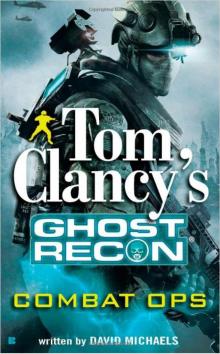 Combat Ops gr-2
Combat Ops gr-2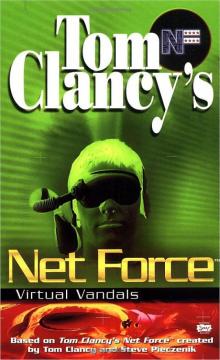 Virtual Vandals nfe-1
Virtual Vandals nfe-1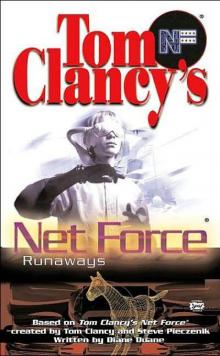 Runaways nfe-16
Runaways nfe-16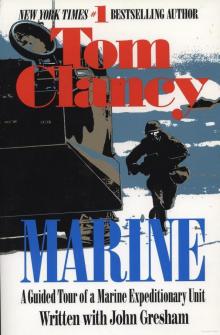 Marine: A Guided Tour of a Marine Expeditionary Unit tcml-4
Marine: A Guided Tour of a Marine Expeditionary Unit tcml-4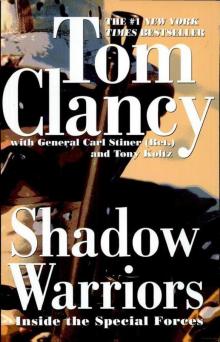 Shadow Warriors: Inside the Special Forces sic-3
Shadow Warriors: Inside the Special Forces sic-3 Jack Ryan Books 1-6
Jack Ryan Books 1-6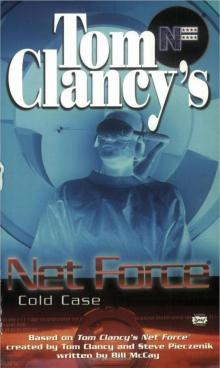 Cold Case nfe-15
Cold Case nfe-15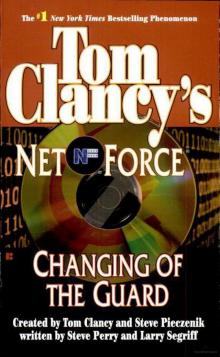 Changing of the Guard nf-8
Changing of the Guard nf-8 Splinter Cell sc-1
Splinter Cell sc-1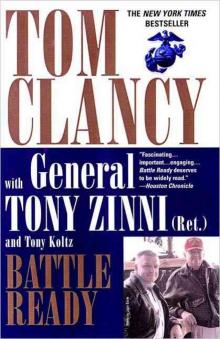 Battle Ready sic-4
Battle Ready sic-4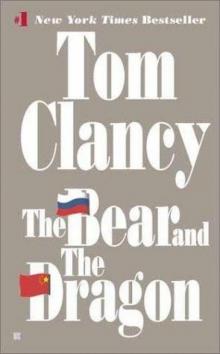 The Bear and the Dragon jrao-11
The Bear and the Dragon jrao-11 Fighter Wing: A Guided Tour of an Air Force Combat Wing tcml-3
Fighter Wing: A Guided Tour of an Air Force Combat Wing tcml-3 Patriot Games jr-1
Patriot Games jr-1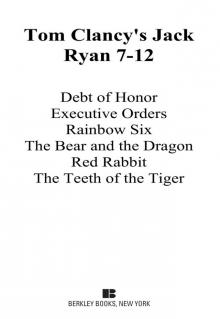 Jack Ryan Books 7-12
Jack Ryan Books 7-12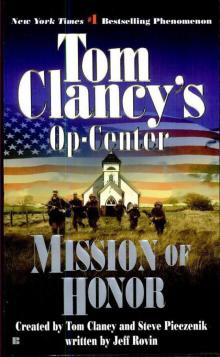 Mission of Honor o-9
Mission of Honor o-9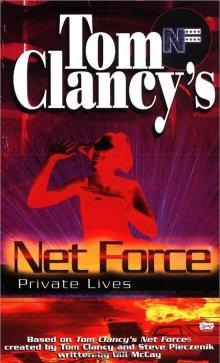 Private Lives nfe-9
Private Lives nfe-9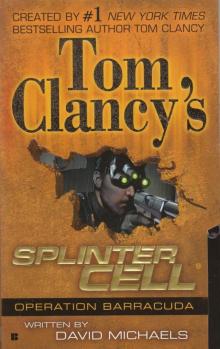 Operation Barracuda sc-2
Operation Barracuda sc-2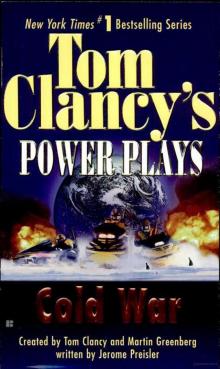 Cold War pp-5
Cold War pp-5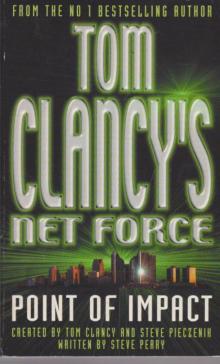 Point of Impact nf-5
Point of Impact nf-5 Red Rabbit jr-9
Red Rabbit jr-9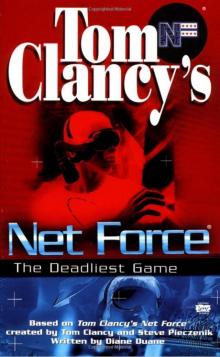 The Deadliest Game nfe-2
The Deadliest Game nfe-2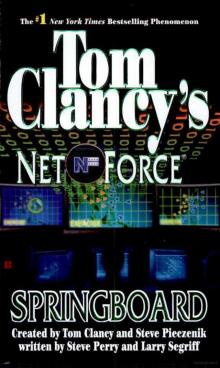 Springboard nf-9
Springboard nf-9 Safe House nfe-10
Safe House nfe-10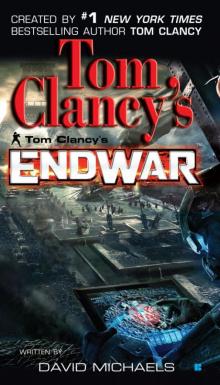 EndWar e-1
EndWar e-1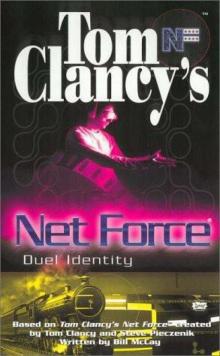 Duel Identity nfe-12
Duel Identity nfe-12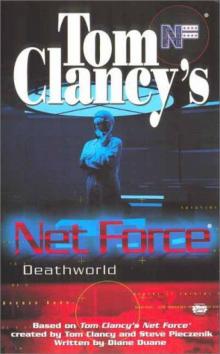 Deathworld nfe-13
Deathworld nfe-13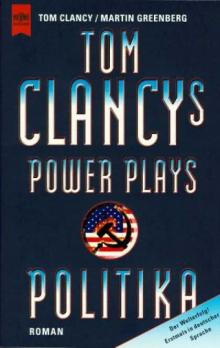 Politika pp-1
Politika pp-1 Rainbow Six jr-9
Rainbow Six jr-9 Tom Clancy's Power Plays 1 - 4
Tom Clancy's Power Plays 1 - 4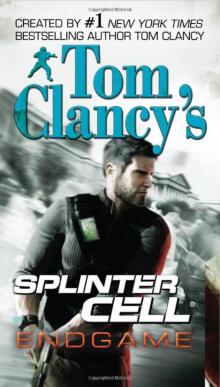 Endgame sc-6
Endgame sc-6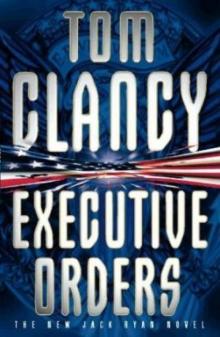 Executive Orders jr-7
Executive Orders jr-7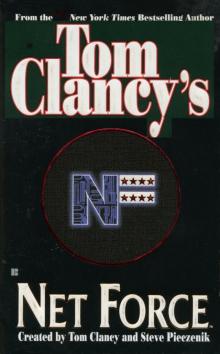 Net Force nf-1
Net Force nf-1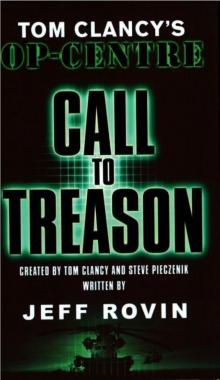 Call to Treason o-11
Call to Treason o-11 Locked On jrj-3
Locked On jrj-3 Against All Enemies
Against All Enemies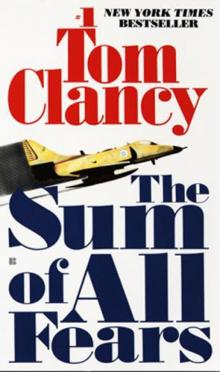 The Sum of All Fears jr-7
The Sum of All Fears jr-7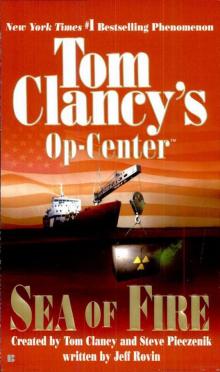 Sea of Fire o-10
Sea of Fire o-10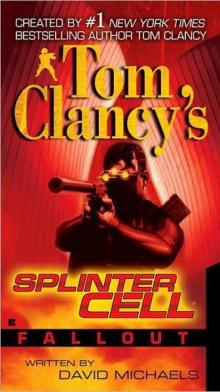 Fallout sc-4
Fallout sc-4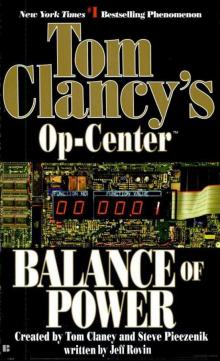 Balance of Power o-5
Balance of Power o-5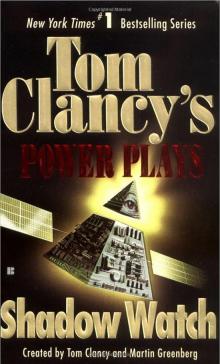 Shadow Watch pp-3
Shadow Watch pp-3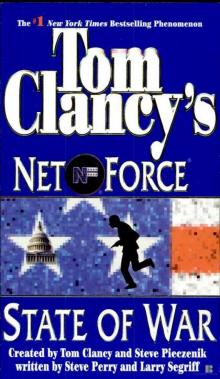 State of War nf-7
State of War nf-7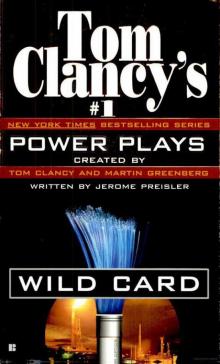 Wild Card pp-8
Wild Card pp-8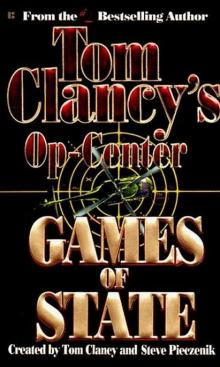 Games of State o-3
Games of State o-3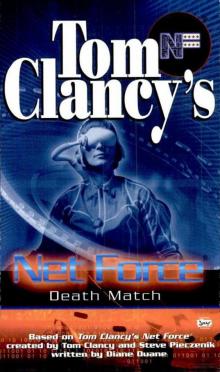 Death Match nfe-18
Death Match nfe-18 Against All Enemies mm-1
Against All Enemies mm-1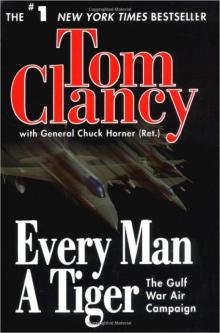 Every Man a Tiger: The Gulf War Air Campaign sic-2
Every Man a Tiger: The Gulf War Air Campaign sic-2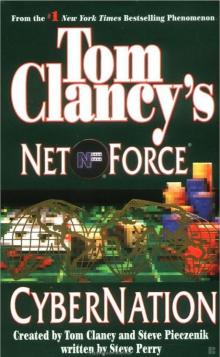 Cybernation nf-6
Cybernation nf-6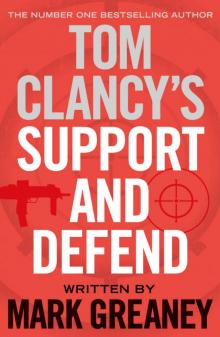 Support and Defend
Support and Defend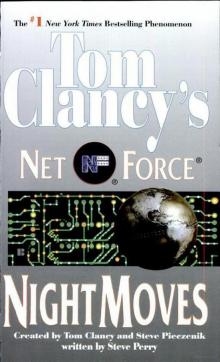 Night Moves nf-3
Night Moves nf-3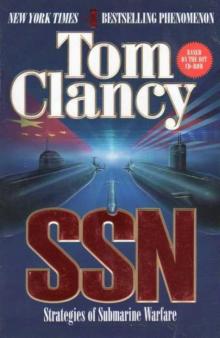 SSN
SSN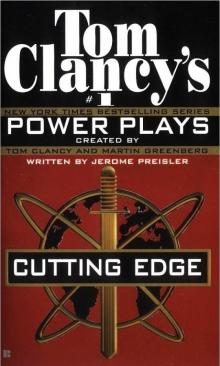 Cutting Edge pp-6
Cutting Edge pp-6 The Cardinal of the Kremlin jrao-5
The Cardinal of the Kremlin jrao-5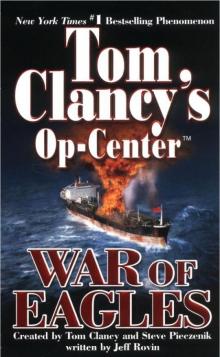 War of Eagles o-12
War of Eagles o-12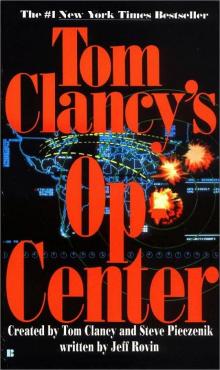 Op-Center o-1
Op-Center o-1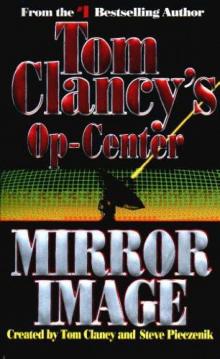 Mirror Image o-2
Mirror Image o-2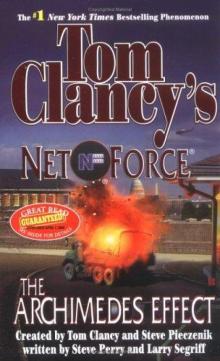 The Archimedes Effect nf-10
The Archimedes Effect nf-10 Teeth of the Tiger jrj-1
Teeth of the Tiger jrj-1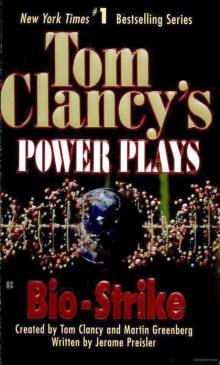 Bio-Strike pp-4
Bio-Strike pp-4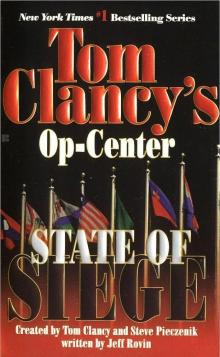 State of Siege o-6
State of Siege o-6 Debt of Honor jr-6
Debt of Honor jr-6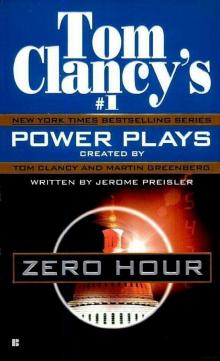 Zero Hour pp-7
Zero Hour pp-7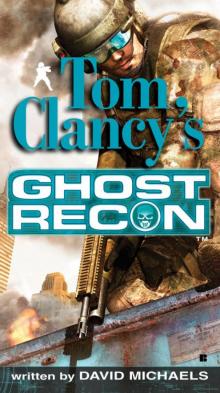 Ghost Recon gr-1
Ghost Recon gr-1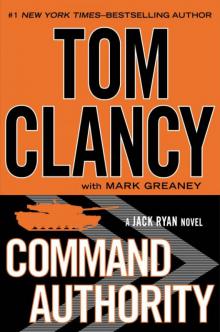 Command Authority jr-10
Command Authority jr-10 Tom Clancy's Power Plays 5 - 8
Tom Clancy's Power Plays 5 - 8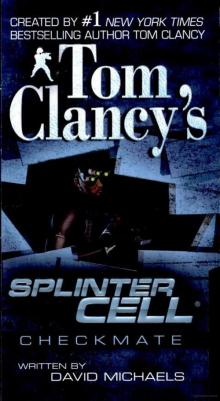 Checkmate sc-3
Checkmate sc-3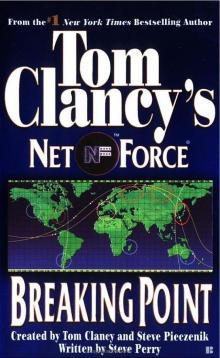 Breaking Point nf-4
Breaking Point nf-4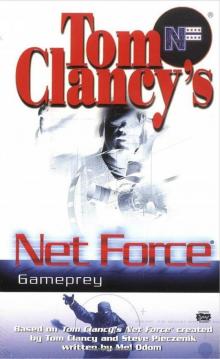 Gameprey nfe-11
Gameprey nfe-11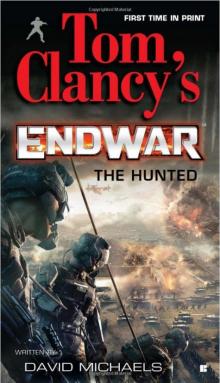 The Hunted e-2
The Hunted e-2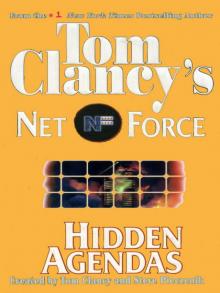 Hidden Agendas
Hidden Agendas Divide and Conquer o-7
Divide and Conquer o-7